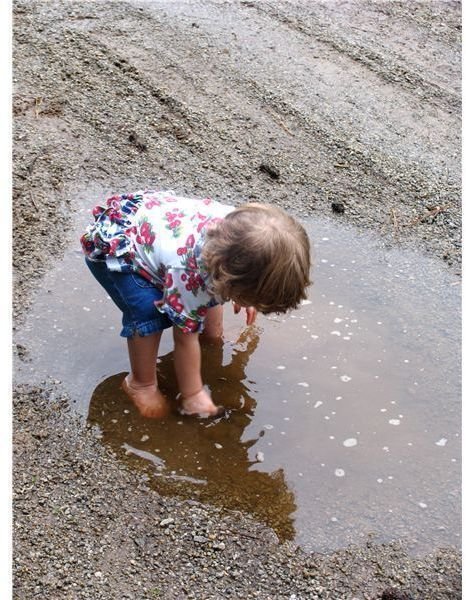Montessori Toddler Activities for Early Learning
The Montessori Method Overview
The Montessori method of teaching was developed from the research of Dr. Maria Montessori, an Italian physician and educator. Montessori believed that children act intrinsically, and are driven to learn by their nature and the materials they are presented with. She believed in self-correcting materials that needed little to no explanation or manipulation by adults in order for children to use them successfully.
Montessori’s most famous belief is that play is the work of children. Through observation, she learned that children will experiment with their environment, and the bulk of their learning will come through environmental experiences, rather than teacher or parent guided exercises and lessons.
Because toddlers are, by nature, explorers and experimenters, their method of learning about the world fits right in with the Montessori philosophy. Planning a full Montessori classroom for toddlers can be a bit of a challenge, but planning a few activities for children that embrace the Montessori concepts can be fun and relatively easy. Read on for a few ideas.
Practical Life Activities
Dr. Maria Montessori was an advocate of presenting children with work that would help them in their regular life, not just in school. This type of work often includes activities for self-care such as getting dressed, washing hands and preparing for meals.
Meal Prep: Allow toddlers to help prepare snacks and meals. Using child friendly materials, give toddlers jobs such as pouring, scooping and mixing to prepare food. Give your toddler a spray bottle of soapy water and ask her to clean off the lunch table with a paper towel. Allow her to carry the plates to the table and distribute them to the correct spots. Serve your meals family style and allow toddlers to serve themselves a scoop of each type of food you have available.
Clothing: Allow your toddler to choose her own clothing from a few weather appropriate options. Give her opportunities to help hang up or fold clothes that she is not wearing, or put folded clothes in appropriate drawers. Practice these practical skills by folding small hand towels or rolling up small rugs.
Self-Correcting Activities
Most educators know about the self-correcting toys and materials that were made popular by the Montessori method of teaching. Because Montessori believed in little direction or manipulation by educators when children are working, most materials used in a Montessori classroom are self-correcting.
Shape Sorters: Wooden or plastic, shape sorters are appropriate for toddlers and because it is impossible to fit a shape into a different shape’s hole, these toys are self-correcting. Allowing your toddlers to explore these toys on their own will encourage spatial awareness.
Counters: Counters are a series of wooden tiles with a number stamped on them, as well as that same number of holes drilled into them. Counters work with colored blocks that fit inside the drilled holes. Toddlers can easily place the blocks into the drilled holes in a self-correcting activity, requiring little to no adult supervision or direction.
Other Ideas
Loud and Quiet Shakers: Create an activity for auditory discrimination using empty plastic water bottles and materials you have in your home or classroom. Fill a few bottles with materials that will make loud noises when shaken such as jingle bells, beans and plastic beads. Be sure to glue the caps on tightly to avoid the materials spilling from the bottles. Fill a few bottles with materials that will make little to no noise when shaken such as feathers, rice or colored water.
Classifying: Use a plastic children’s tea set for this activity. Allow toddlers to separate the components of the tea set by use. For example, make a stack of small plates, a stack of larger plates, a grouping for tea cups and a grouping for spoons. Or, if your tea set is multi-colored, encourage your toddler to create a tea setting all in one color or incorporating one of each color for each place setting. Allow toddlers to explore these materials on their own and see what other ways they choose to classify the objects.
Sequencing: Use a simple peg board, plastic or wooden with different colored pegs, for sequencing activities. Allow toddlers to explore the pegs and board on their own. At first, they will probably not make any kind of sequencing pattern with the colored pegs. After several attempts, though, you may notice a pattern emerging. Encourage each toddler to keep making the pattern by adding another peg or just asking, “What peg comes next?”
Whether you believe in a full Montessori curriculum or just connect with a few basic philosophies, planning some of these activities can be fun and rewarding for both you and your students.
References
- Montessori From The Start: The Child at Home from Birth to Age Three; Paula Polk Lillard; 2003
- International Montessori Society: http://www.imsmontessori.org/what-is-montessori.htm
- Photo Credit: Anita Patterson http://morguefile.com/archive/display/73230
